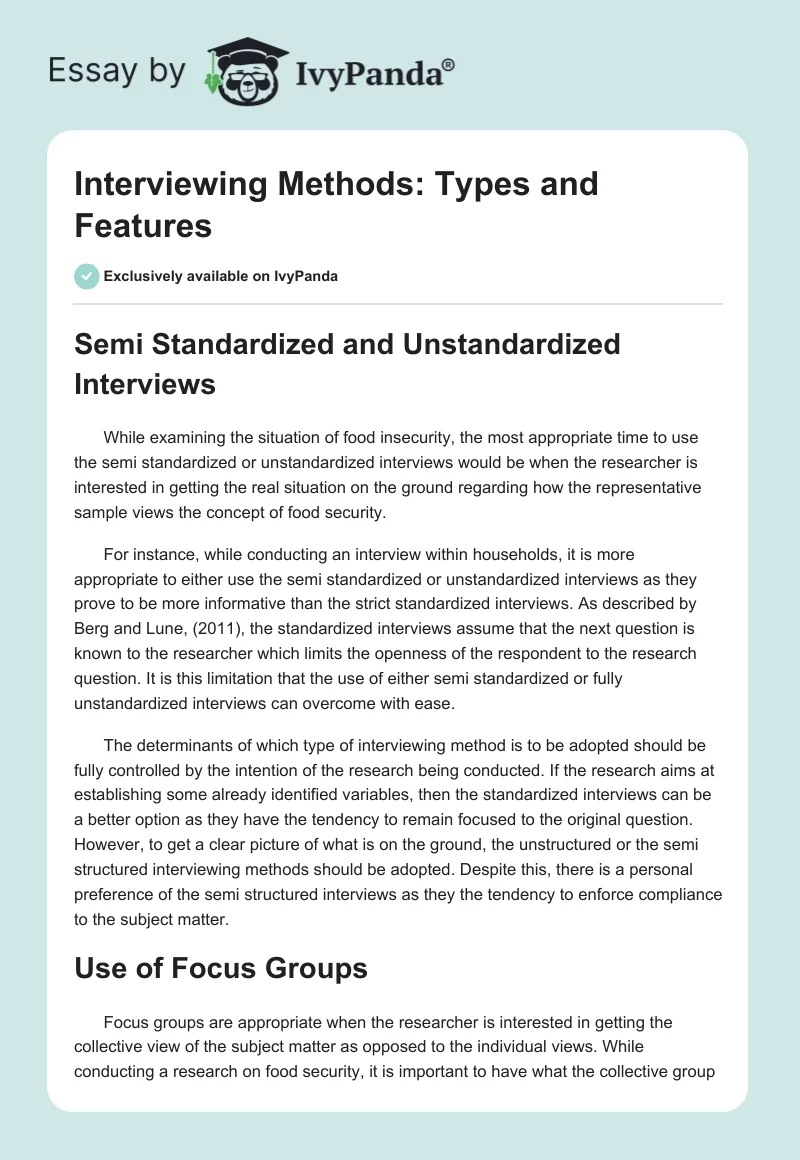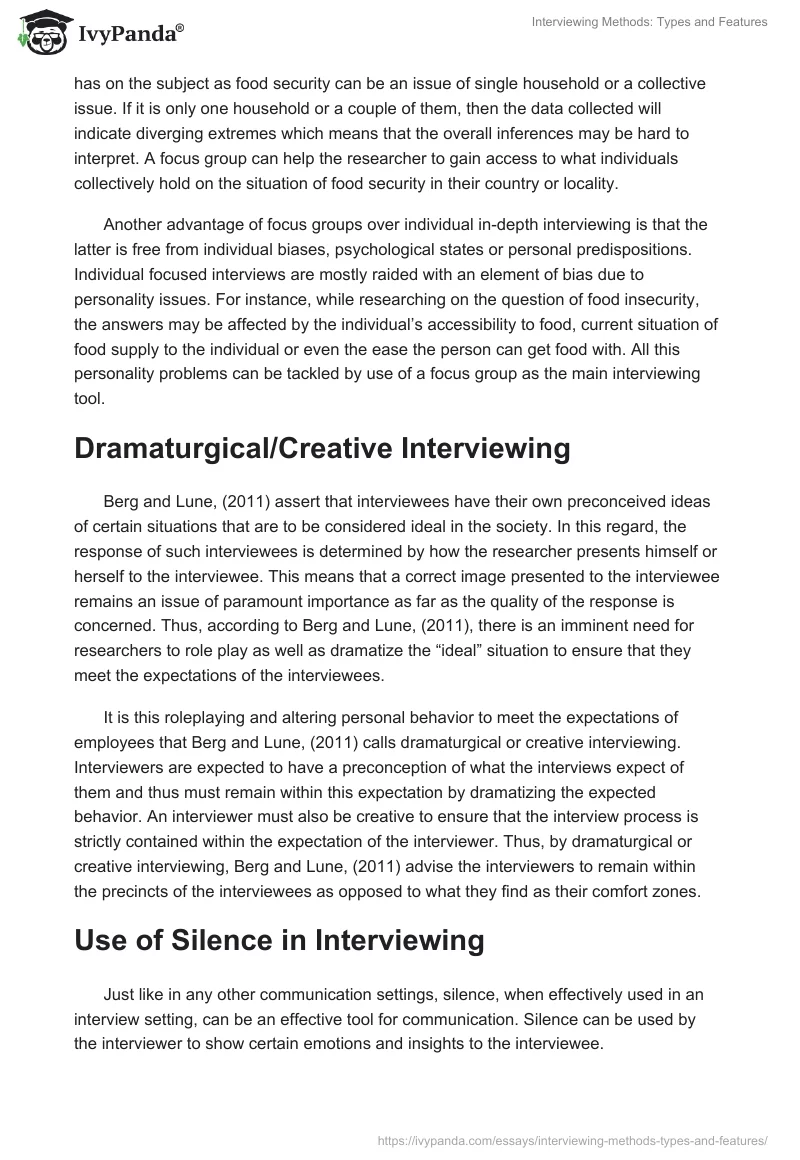Semi Standardized and Unstandardized Interviews
While examining the situation of food insecurity, the most appropriate time to use the semi standardized or unstandardized interviews would be when the researcher is interested in getting the real situation on the ground regarding how the representative sample views the concept of food security.
For instance, while conducting an interview within households, it is more appropriate to either use the semi standardized or unstandardized interviews as they prove to be more informative than the strict standardized interviews. As described by Berg and Lune, (2011), the standardized interviews assume that the next question is known to the researcher which limits the openness of the respondent to the research question. It is this limitation that the use of either semi standardized or fully unstandardized interviews can overcome with ease.
The determinants of which type of interviewing method is to be adopted should be fully controlled by the intention of the research being conducted. If the research aims at establishing some already identified variables, then the standardized interviews can be a better option as they have the tendency to remain focused to the original question. However, to get a clear picture of what is on the ground, the unstructured or the semi structured interviewing methods should be adopted. Despite this, there is a personal preference of the semi structured interviews as they the tendency to enforce compliance to the subject matter.
Use of Focus Groups
Focus groups are appropriate when the researcher is interested in getting the collective view of the subject matter as opposed to the individual views. While conducting a research on food security, it is important to have what the collective group has on the subject as food security can be an issue of single household or a collective issue. If it is only one household or a couple of them, then the data collected will indicate diverging extremes which means that the overall inferences may be hard to interpret. A focus group can help the researcher to gain access to what individuals collectively hold on the situation of food security in their country or locality.
Another advantage of focus groups over individual in-depth interviewing is that the latter is free from individual biases, psychological states or personal predispositions. Individual focused interviews are mostly raided with an element of bias due to personality issues. For instance, while researching on the question of food insecurity, the answers may be affected by the individual’s accessibility to food, current situation of food supply to the individual or even the ease the person can get food with. All this personality problems can be tackled by use of a focus group as the main interviewing tool.
Dramaturgical/Creative Interviewing
Berg and Lune, (2011) assert that interviewees have their own preconceived ideas of certain situations that are to be considered ideal in the society. In this regard, the response of such interviewees is determined by how the researcher presents himself or herself to the interviewee. This means that a correct image presented to the interviewee remains an issue of paramount importance as far as the quality of the response is concerned. Thus, according to Berg and Lune, (2011), there is an imminent need for researchers to role play as well as dramatize the “ideal” situation to ensure that they meet the expectations of the interviewees.
It is this roleplaying and altering personal behavior to meet the expectations of employees that Berg and Lune, (2011) calls dramaturgical or creative interviewing. Interviewers are expected to have a preconception of what the interviews expect of them and thus must remain within this expectation by dramatizing the expected behavior. An interviewer must also be creative to ensure that the interview process is strictly contained within the expectation of the interviewer. Thus, by dramaturgical or creative interviewing, Berg and Lune, (2011) advise the interviewers to remain within the precincts of the interviewees as opposed to what they find as their comfort zones.
Use of Silence in Interviewing
Just like in any other communication settings, silence, when effectively used in an interview setting, can be an effective tool for communication. Silence can be used by the interviewer to show certain emotions and insights to the interviewee.
Silence can be used as a form of probing skill in the sense that the interviewer, especially in a face to face private interview, gets the sense of emotional connection with the interviewer thus giving more relevant responses that can prove helpful to the researcher. Another importance of silence is that it gives room for effective turn taking which further encourages the interviewee and the interviewer to have more meaningful sessions.
Another important voice input that can be used to add to the quality of the interview is echoing. Echoing can effectively be used by the interviewer to demonstrate keen interest in the interviewee responses. This way, the interviewer earns the confidence of the interviewee leading to a better quality of the response received from the interviewee. Echoing can be used to confirm to the interviewee that the interviewer is keenly interested in the response and that he or she is happy with the response he is receiving. Thus, echoing adds to the quality of the interview responses.
Reference
Berg, B., and Lune, H. (2011). Qualitative Research Methods for the Social Sciences. 8th Ed. New York: Pearson Education.


